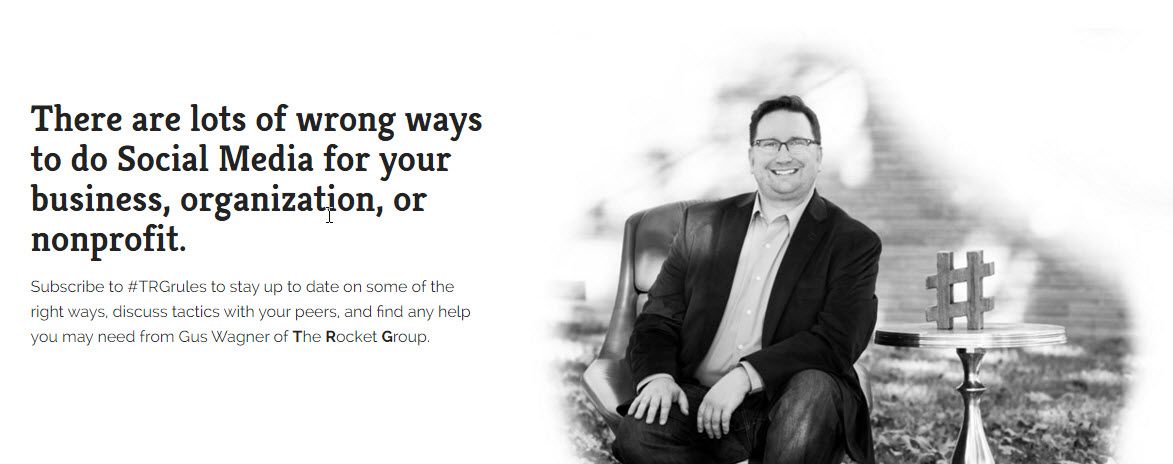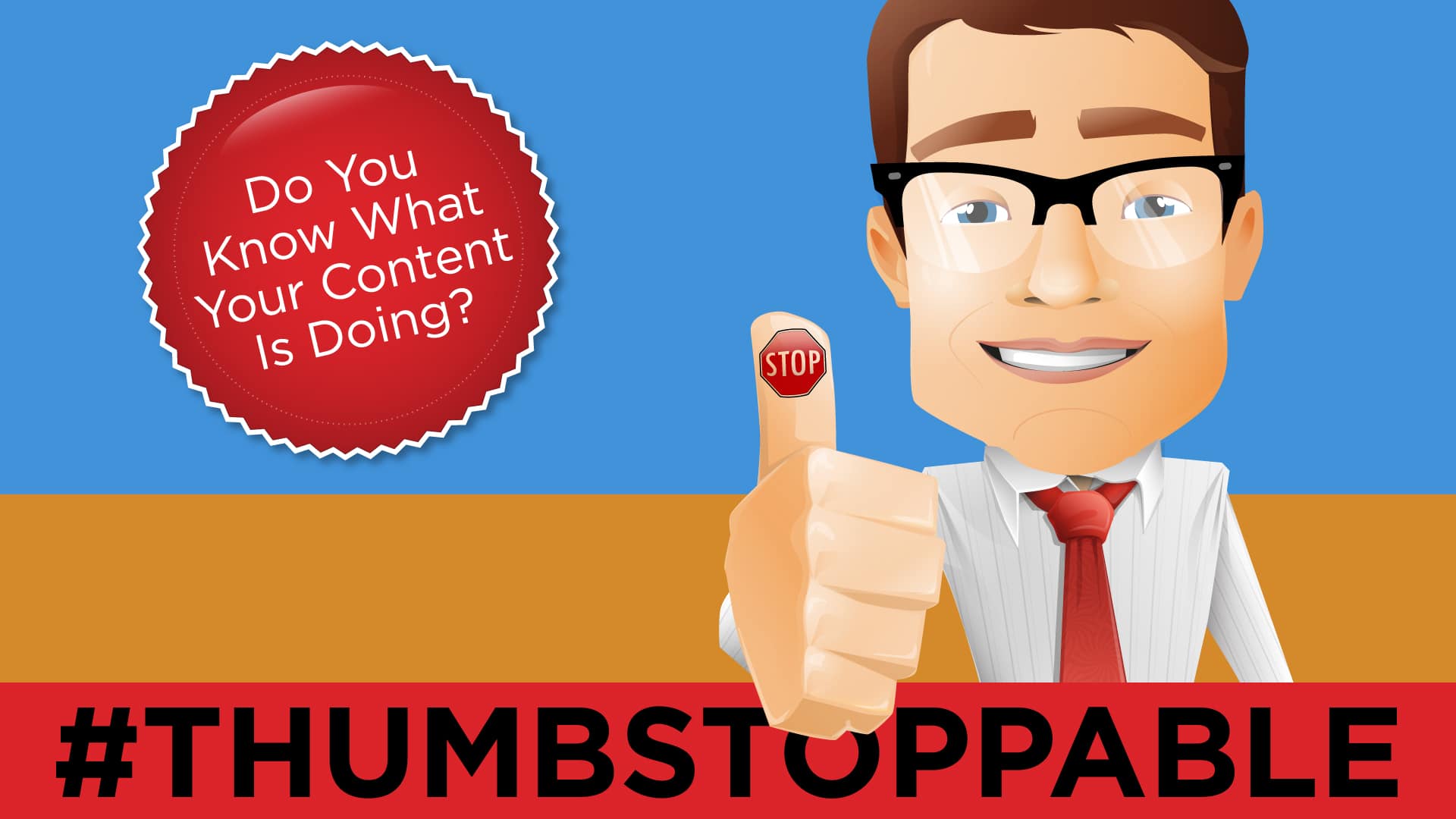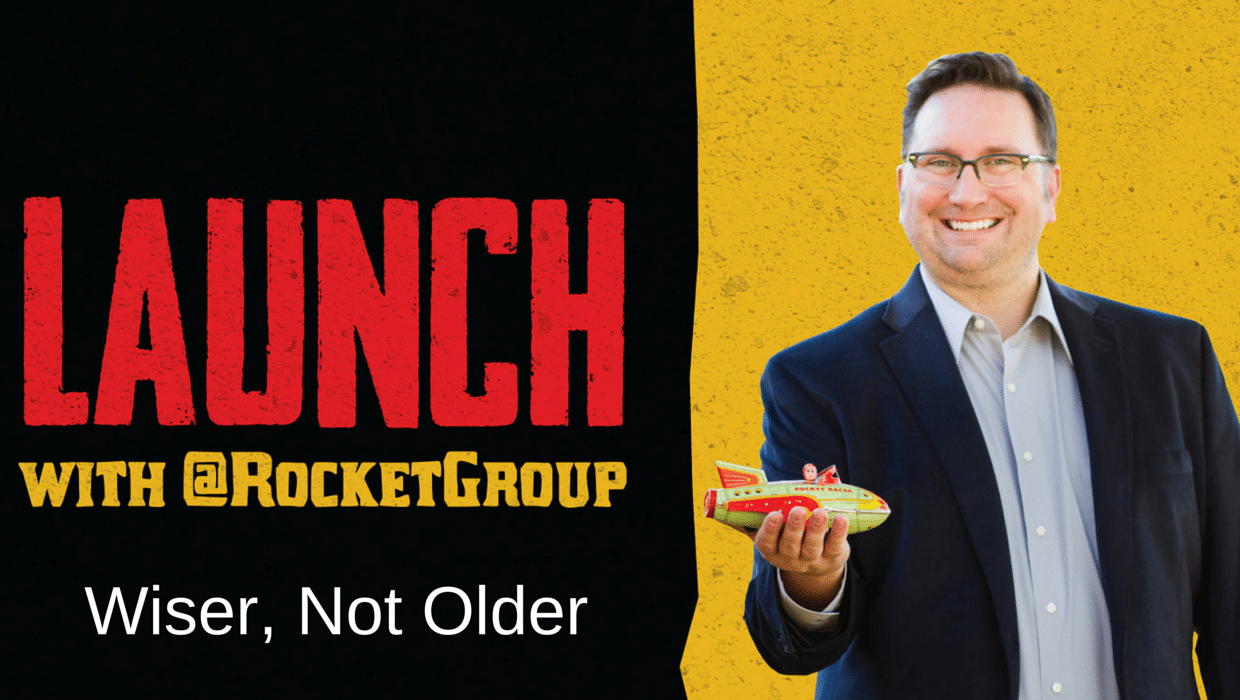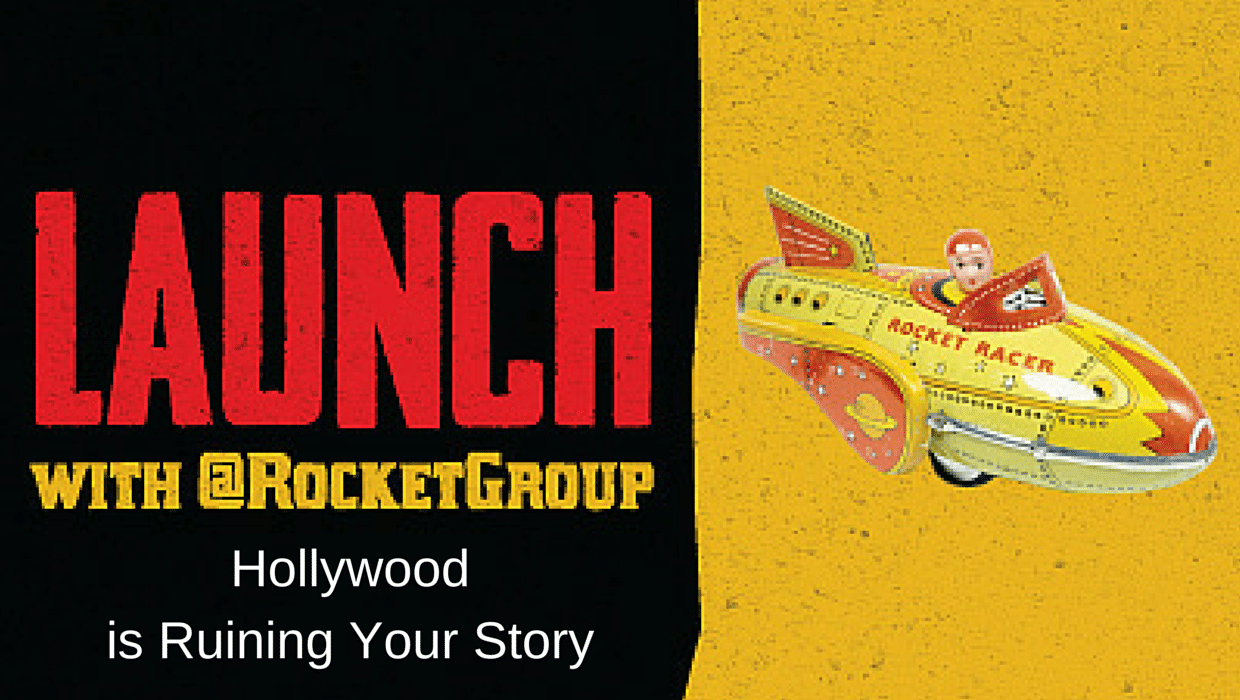Blog
Add Project Details to Your LinkedIn
Gus Wagner - Comment (0)The #31DaysOfLinkedIn Posts from @RocketGroup
#31DaysOfLinkedIn – Introduction and Recap
A Look at LinkedIn Endorsements and Recommendations
Add Project Details to Your LinkedIn
Building Relationships on LinkedIn
Comparing LinkedIn Audiences to Other Social Platforms through @GaryVee
Educate, Inform, and Entertain Yourself with LinkedIn Groups
Kids, LinkedIn is for Professional Stuff
LinkedIn Premium: How Do They Work?
LinkedIn: Connect with the Right People, the Right Way
Manage Your LinkedIn Activities
Optimize Your LinkedIn Headline
Professionally Mingling on LinkedIn
Recruiting and Hiring on LinkedIn
Say No to the Default on LinkedIn
Setting a Schedule for LinkedIn Activity
Share (Professional) Stuff on LinkedIn
Sharing and Getting Shared on LinkedIn
Sharing Content on LinkedIn Effectively
Spread Out Your LinkedIn Posts
Taking LinkedIn to the Real World
To Pay or Not to Pay for LinkedIn
Want to Get Found on LinkedIn?
What We Learned During #31DaysOfLinkedIn
Read more...Recruiting and Hiring on LinkedIn
Gus Wagner - Comment (0)When it comes to LinkedIn, we actually have a longer history with the platform than the #31DaysOfLinkedIn. We have been offering training courses and presentations on LinkedIn for years.
Through organizations like MINK Midwest MD and other hiring and human resources based organizations, we have talked through the strategies of recruiting on LinkedIn. We’ve been invited back many times so something we said must be clicking!
To recruit effectively on LinkedIn, you need to consider it takes more than an open job placement to attract applicants to your business, organization, or nonprofit.
You need to do these things on LinkedIn to attract applicants
Be active. Your LinkedIn hiring placement cannot be the first time LinkedIn has ever heard of you and yours. One of the first things a qualified, and cautious, applicant is going to do is look for more information about the place they see is hiring. If there is no digital footprint on LinkedIn, or other places, about your place of employment…it’s a huge red flag. It is an even larger red flag if the information about you online is infrequent or all within the week leading up to the opening. It is the 21st Century and most of us are well-versed in using Google as a detective agency.
Have a page. Beyond the personal profile of you, the hiring person or the recruiting agency person, you need to make sure the hiring organization is represented by an active LinkedIn business page. Refer to the point above for the real reasons why but it boils down to social proof and digital strength. Also, having an active Page on LinkedIn is good for your SEO. Just don’t look at our page for inspiration.
Have testimonials. Referred to as “Recommendations” on LinkedIn for personal profiles and business pages, this is where people who know you give their $0.02 about their professional experiences with you. If you are a Fortune 100 firm, this may not be as important as it is to a twenty-person accounting firms in the middle of Nebraska but it is something which applicants look at and will consider when reviewing openings. Also: If the testimonials are all from employees, you are painting a certain kind of picture. If the testimonials are from customers, community leaders, and peers, well, that is a different kind of picture entirely.
Have a digital trail. In addition, to your LinkedIn page you need to be active in telling your story (related to hiring or not) across at least Facebook and YouTube. Facebook is where the majority of the online population is active and if you have no impact there, it is telling. Additionally, you should be taking advantage of the best camera you own (probably the phone you are probably reading this on) and creating video content about your operation, the job you are hiring for, and the environment of the company, etc. you want then to come to work for. Why is this important to mention in a post about LinkedIn? Trailing families will take to the web to research on their own the company which is about to be involved in their lives. If that research turns up with minimal results, you have a hiring problem.
Internal advocacy. They say most jobs are filled by people the hiring party already knows. I am not sure who “they” are, but I do not they are not incorrect. If you have an open position and have posted it online, encourage your best (read: internal) customers to share that opening across their own social channels and let networking do some of the recruitment work for you. The job opening could be from CEO to lead bottle washer and, chances are, your employees will have someone in their own networks to bring into the process for you. Plus: the more social media content of your organization your employees share for you the larger audience you can attract to Like, Follow, Connect with your profiles so they are aware of your other news besides job openings.

Lead your community. This point is critical to the trailing families we mentioned before. If the children of the potential applicant Google (or LinkedIn search) your community and find nothing to their liking, then they will lobby against the relocation. On the flip side, if the trailing spouse searches you, your business, and your community and finds things to their liking, it becomes an easier sell for you to make the hire. How can you control what they find out about the geographic community or region you do business in? Be active in promoting local good news on your social channels, be an integral part of sponsoring your community activities so your name turns up in searches related to “things to do in Mayberry, NC” (if you are located in Mayberry, NC), and create photo/video content promoting not just your organization and the opening but the community you are trying to recruit hires to relocate to. Selling your community is a huge part of your real world recruitment activities and it should be just as large a part of your online activities.
How have your hiring and recruiting activities gone on LinkedIn? We have heard plenty of good, bad, and indifferent stories over the years and would like to hear yours in the comments below, on social media, or privately.
If you found this to be an interesting piece of LinkedIn information, please hit the Share tools to the side of these words so your networks can take a look at is as well.
Many thanks for reading this far down the #31DaysOfLinkedIn page and if you have any LinkedIn (or other) questions or obstacles, let me know and we will see if we can tackle them together!
PS: If you are interested, here is a full presentation on LinkedIn and recruiting I gave recently.
The #31DaysOfLinkedIn Posts from @RocketGroup
#31DaysOfLinkedIn – Introduction and Recap
A Look at LinkedIn Endorsements and Recommendations
Add Project Details to Your LinkedIn
Building Relationships on LinkedIn
Comparing LinkedIn Audiences to Other Social Platforms through @GaryVee
Educate, Inform, and Entertain Yourself with LinkedIn Groups
Kids, LinkedIn is for Professional Stuff
LinkedIn Premium: How Do They Work?
LinkedIn: Connect with the Right People, the Right Way
Manage Your LinkedIn Activities
Optimize Your LinkedIn Headline
Professionally Mingling on LinkedIn
Recruiting and Hiring on LinkedIn
Say No to the Default on LinkedIn
Setting a Schedule for LinkedIn Activity
Share (Professional) Stuff on LinkedIn
Sharing and Getting Shared on LinkedIn
Sharing Content on LinkedIn Effectively
Spread Out Your LinkedIn Posts
Taking LinkedIn to the Real World
To Pay or Not to Pay for LinkedIn
Want to Get Found on LinkedIn?
What We Learned During #31DaysOfLinkedIn
Read more...Share (Professional) Stuff on LinkedIn
Gus Wagner - Comment (0)There are a couple of mantras we are known for here at The Rocket Group: Educate, Inform, Entertain and Share Then Like.
The former is the filter we put all of our content, even the #31DaysOfLinkedIn, through…does it seek to educate, inform, and/or entertain our audience? If not, we toss it or improve it until it does.
The latter refers to empowering our audience to share not just our content but any interesting content they come across in their social media journeys. The Like button on most social media platform is right there next to the Share (or Retweet) button but for the most part it goes relatively unused in comparison to the Like functon. That is a shame, as the Share function actually gives you the power to add your pithy comments to the content you are sharing. You can add your endorsement, you can dismiss the content as bunk, or you can ask your flocks what they think. Sharing is the most powerful action you can take on social media, and that applies to LinkedIn as well.
What you can share on LinkedIn
Posts. Just as we have discussed before, and just like on Facebook, you can make posts on LinkedIn. Of course, they call them Updates to be different but they work in the exact same manner. Drop in a link, upload a photo, share an educational, informational, or entertaining text post and it is sent out to the timelines of your connections. If you are lucky, it may end up in some of the proactive emails LinkedIn sends to users who haven’t opted out of them yet. Here’s the thing, there is no telling how many of your 12,24, 2400 LinkedIn connections are actually active on the platform so there isn’t a good expectation of how many folks will actually see your posts.

Blogs. Pulse, as they call it, or Publisher, as most others still call it, is the blogging tool of LinkedIn. You can post evergreen content which you have previously written or you can use it to post original content to the site. Once you hit publish on your post, all of your connections will get a red flag notification that you have made the post. This proactive steps are where there is a distinct difference between LinkedIn and the other Big 6 social media platforms.
Videos. In Pulse, you can embed a complete YouTube or Vimeo to a blog post. This video will now be in the post as full content so views on LinkedIn count as views on the original platform. I would never suggest posting just a video alone as a piece of Pulse content. You should have the full blog with your video, just as you would on your website. (Example: Like we do on our blog posts.)

Images. On the front page of LinkedIn, your timeline/newsfeed, there in the middle of the calls to action for you to do something is an underutilized one: Upload a photo. This doesn’t mean you should have a party uploading your latest meme or sales flyer, it does mean you should upload high quality photos of you and your efforts in professional action.
Pro tip: Photos and videos of your business behind the scenes are always popular visuals to share.
Yourself. LinkedIn isn’t a place to live-tweet your day-to-day activities but it can be a place where you share your achievements, your professional (geographic and resume) journeys, and your toutings of your peers, customers, and connections. The more of professional you that you share on the platform, the more your current and future connections are going to trust you and look to you as a solution provider.
What interesting, yet professional, items have you seen shared on LinkedIn? Share them (ha!) in the comments below or on social media with the #31DaysOfLinkedIn hashtag.
Keep those questions and comments coming on Periscope, on LinkedIn, and here on the TRG website. If there is something we can tackle together, let’s talk and see what answers we can come up with!
The #31DaysOfLinkedIn Posts from @RocketGroup
#31DaysOfLinkedIn – Introduction and Recap
A Look at LinkedIn Endorsements and Recommendations
Add Project Details to Your LinkedIn
Building Relationships on LinkedIn
Comparing LinkedIn Audiences to Other Social Platforms through @GaryVee
Educate, Inform, and Entertain Yourself with LinkedIn Groups
Kids, LinkedIn is for Professional Stuff
LinkedIn Premium: How Do They Work?
LinkedIn: Connect with the Right People, the Right Way
Manage Your LinkedIn Activities
Optimize Your LinkedIn Headline
Professionally Mingling on LinkedIn
Recruiting and Hiring on LinkedIn
Say No to the Default on LinkedIn
Setting a Schedule for LinkedIn Activity
Share (Professional) Stuff on LinkedIn
Sharing and Getting Shared on LinkedIn
Sharing Content on LinkedIn Effectively
Spread Out Your LinkedIn Posts
Taking LinkedIn to the Real World
To Pay or Not to Pay for LinkedIn
Want to Get Found on LinkedIn?
What We Learned During #31DaysOfLinkedIn
Read more...Pay Attention on LinkedIn
Gus Wagner - Comment (0)Many thanks to those who jumped in live during this Periscope livestream broadcast!Do you know what online audience is active 24-7-365 and looking to have profitable interactions? Your LinkedIn Connections, that’s who.As we have said over and over during these #31DaysOfLinkedIn: You need to be active on the platform and take advantage of the fact that so many of your peers and competition are not.How you can pay more attention to LinkedIn.
Respond. You get inquiries, connection requests, and notifications around the clock. The quicker you respond to them the better chance you will have of success. I used to be a real dummy myself and let connection requests sit until a Monday morning ritual. Don’t be like I used to be.Report. Do you have news which is good, bad, or indifferent for yourself or your company? Make sure you report it in as many places online as possible, including LinkedIn, before it gets told incorrectly by other sources. One of the cardinal rules of communications is to “report your own bad news.” To do so is incredibly easier now with social media, your own website, and the rest of the internet. I have seen companies post earnings reports on LinkedIn just as much as I have seen people say they have gone through a downsizing and are looking for a job. Both types of posts were well received by their LinkedIn connections.Look. Another part of your LinkedIn which runs around the clock is your timeline. I’m not sure how the algorithm here works* other than randomly. I have seen posts three scrolls down which are minutes old and posts at the top of the same visit more than twenty-four hours old. Here’s the deal, if a post is less than twenty-four hours old and relevant to you, interact with it. Like it, comment on it, share it. The author will appreciate it. Trust me on that one.Groups. Click the link there (this one), and utilize the connections you have made in the Groups you have joined. Again, your interaction with posts less than twenty-four hours old is greatly appreciated. Every public action you take on LinkedIn is broadcast into the timelines of your connections which helps content achieve the audiences-of-audiences-of-audiences goal of social media. It will work for your content as well. If you create any.What benefits of paying attention on LinkedIn have you received? Share your thoughts in the comments below or on social media with the #31DaysOfLinkedIn #. Let’s keep in touch and work through any LinkedIn questions you have, together!*I am pretty sure the algorithm is weighted towards who you interact with the most. Since few people interact at great levels on LinkedIn, the person who you congratulated on their promotion a year ago is usually the top person you see in the timeline. Is yours different?The #31DaysOfLinkedIn Posts from @RocketGroup
#31DaysOfLinkedIn – Introduction and Recap
A Look at LinkedIn Endorsements and Recommendations
Add Project Details to Your LinkedIn
Building Relationships on LinkedIn
Comparing LinkedIn Audiences to Other Social Platforms through @GaryVee
Educate, Inform, and Entertain Yourself with LinkedIn Groups
Kids, LinkedIn is for Professional Stuff
LinkedIn Premium: How Do They Work?
LinkedIn: Connect with the Right People, the Right Way
Manage Your LinkedIn Activities
Optimize Your LinkedIn Headline
Professionally Mingling on LinkedIn
Recruiting and Hiring on LinkedIn
Say No to the Default on LinkedIn
Setting a Schedule for LinkedIn Activity
Share (Professional) Stuff on LinkedIn
Sharing and Getting Shared on LinkedIn
Sharing Content on LinkedIn Effectively
Spread Out Your LinkedIn Posts
Taking LinkedIn to the Real World
To Pay or Not to Pay for LinkedIn
Want to Get Found on LinkedIn?
What We Learned During #31DaysOfLinkedIn
Read more...Sharing Content on LinkedIn Effectively
Gus Wagner - Comment (0)When it comes to publishing your content (#31DaysOfLinkedIn, much?) or just sharing information on LinkedIn, there are a couple of ways to go about it. Some will be more successful for you than others.
5 ways to distribute your content on LinkedIn
Updates through your personal profile: Starting with the easiest form of communicating on the platform, you can just make a post (called an update on LI) from your home page or profile. This functions exactly like making a post on Facebook and allows you to add links, #’s, and thumbnail images. These posts are seen in the timelines of your connections (possibly) and will be published in the updates emailed to some of your connections. Unlike Facebook, these posts are not collected on your personal profile but do have an extended shelf life of a couple days based on the activity of your connections.
Updates through your business page: This option requires you to take the extra effort and create a LinkedIn business page. You will be starting this from scratch with zero followers and zero content on Day One. You will have to earn followers through your connections and your content, which is where this post comes in. The basics of your LinkedIn business page is very similar to your Facebook business page in management and function. Posts do live longer on this page but the reach is much smaller.
Posting links to content in relevant LinkedIn Groups: We’ve talked about LinkedIn Groups before during these 31 Days and by now you are hopefully participating in them in greater levels, even if it is just reading others content. Before you start just dumping links into the Groups you are a member of, be sure you are an active participant of the group and have a sense of what is going on there. Is your content something others have recently posted? Is your content to the high or low level of quality others are posting to the group? Be sure your content will be accepted and interacted with before going all willy-nilly by dumping links into the group. Your success rate here will be high if you are offering value through your content. If you are being promotional, then success rate may vary.
Publishing your content on LinkedIn Pulse: Pulse, Publisher, the blog tool, whatever you call it, this is a great way to get your longer form content in front of your connections. When you publish here, all of your connections get a notification that you have done so. These notifications are in the little red flag icon in the top bar of LinkedIn. Your readers then have options to interact with your content through Likes, comments, and shares (sound familiar?). Chances are you will get more views from likely profitable connections through publishing on LinkedIn than on your own website. This doesn’t mean you give up your website, it means you utilize the additional channel of LinkedIn to drive audiences back to your website, your email signup, and your phone number to respond to your even greater calls to action. These updates may also be included in LinkedIn’s proactive Pulse email updates for your connections, and others, to see again.
Paying for LinkedIn sponsored updates: Of course, you can always pay to play. LinkedIn has a very powerful and highly targetable advertising platform, just like all the other Big 6 of social media. The difference here is the cost and the audience. LinkedIn is by far the most expensive social media platform to advertise on. I have placed ads here in the past with similar goals of a similar concurrent Facebook campaign, LinkedIn cost almost $10 to every $1 spent on Facebook. Additionally, with the overwhelmingly lurking audiences on LinkedIn, you have to be really good to catch the eyes of users who are there for their own surfing experience.
TL; DR: You should be using some or all of the above publishing options to share your content to your current and future connections on LinkedIn. Be prepared for some frustration and possible cost.
Thanks for reading this far down the page. How are you liking the #31DaysOfLinkedIn so far? We’ve got plans to finish out these next twelve or so posts with in-depth looks at groups, advertising, and audience actions. If you have any LinkedIn questions or obstacles, send them on over and lets work through them together!
Talk soon,
The #31DaysOfLinkedIn Posts from @RocketGroup
#31DaysOfLinkedIn – Introduction and Recap
A Look at LinkedIn Endorsements and Recommendations
Add Project Details to Your LinkedIn
Building Relationships on LinkedIn
Comparing LinkedIn Audiences to Other Social Platforms through @GaryVee
Educate, Inform, and Entertain Yourself with LinkedIn Groups
Kids, LinkedIn is for Professional Stuff
LinkedIn Premium: How Do They Work?
LinkedIn: Connect with the Right People, the Right Way
Manage Your LinkedIn Activities
Optimize Your LinkedIn Headline
Professionally Mingling on LinkedIn
Recruiting and Hiring on LinkedIn
Say No to the Default on LinkedIn
Setting a Schedule for LinkedIn Activity
Share (Professional) Stuff on LinkedIn
Sharing and Getting Shared on LinkedIn
Sharing Content on LinkedIn Effectively
Spread Out Your LinkedIn Posts
Taking LinkedIn to the Real World
To Pay or Not to Pay for LinkedIn
Want to Get Found on LinkedIn?
What We Learned During #31DaysOfLinkedIn
Read more...Who Viewed My LinkedIn Profile?
Gus Wagner - Comment (0)One of the difference makers of LinkedIn as a social media platform is its transparency. One of the major transparency factors is the digital trail you leave as you use LinkedIn.
You’ve probably noticed the emails you receive from LinkedIn (unless you have opted out of them) telling you who has viewed your profile. If you aren’t getting these emails and haven’t opted out, well, no one is viewing your profile.
I recently saw a tweet from my internet friend, Jeremy Goldman, about another level of profile viewing: views from private profiles.
Whenever someone views my LinkedIn profile but I can’t see who it is, a little part of me dies inside
n— Jeremy Goldman (@jeremarketer) December 1, 2015
So how does someone create privacy when they are searching/viewing/perving others’ profiles? We have a video for that below.
Remember: We do not endorse or suggest you act this way on LinkedIn. If you truly want success on the platform, be as open, transparent, and honest as you can.
Thanks for reading and watching this piece. If you know others who can benefit from learning more LinkedIn information, use the share tools to the side of these words and help to spread the word. Keep those comments and questions about the #31DaysOfLinkedIn coming!
The #31DaysOfLinkedIn Posts from @RocketGroup
#31DaysOfLinkedIn – Introduction and Recap
A Look at LinkedIn Endorsements and Recommendations
Add Project Details to Your LinkedIn
Building Relationships on LinkedIn
Comparing LinkedIn Audiences to Other Social Platforms through @GaryVee
Educate, Inform, and Entertain Yourself with LinkedIn Groups
Kids, LinkedIn is for Professional Stuff
LinkedIn Premium: How Do They Work?
LinkedIn: Connect with the Right People, the Right Way
Manage Your LinkedIn Activities
Optimize Your LinkedIn Headline
Professionally Mingling on LinkedIn
Recruiting and Hiring on LinkedIn
Say No to the Default on LinkedIn
Setting a Schedule for LinkedIn Activity
Share (Professional) Stuff on LinkedIn
Sharing and Getting Shared on LinkedIn
Sharing Content on LinkedIn Effectively
Spread Out Your LinkedIn Posts
Taking LinkedIn to the Real World
To Pay or Not to Pay for LinkedIn
Want to Get Found on LinkedIn?
What We Learned During #31DaysOfLinkedIn
Who Viewed My LinkedIn Profile?
Read more...Job Seeking on LinkedIn
Gus Wagner - Comment (0)Since the #31DaysOfLinkedIn launched, there have been several improvements made by LinkedIn in favor of job seekers. You are welcome.
n
nNamely, in a recent blog post, LinkedIn announced they were going to further their Kevin Bacon Game and show deeper levels of your connections at companies with openings, show who top people at those companies are with their LinkedIn profiles, and show more information on the companies which has been published by the company or in other media.This is a nice boon for job seekers and it will be interesting to see how this impacts folks, and companies, success rates.I personally have never really been a job seeker on LinkedIn but admit to using some of the tools so I have familiarity with the ways they work, or don’t. What kind of good, bad, or indifferent LinkedIn job seeking stories do you have to share? I’d be interested in hearing from folks on both side of the help wanted ad as to how LinkedIn has treated you. Feel free to respond privately or in the comments below!As always, if you found this educational, informative, or entertaining, be sure to hit the share buttons to the side so that your audiences may benefit from it as well!The #31DaysOfLinkedIn Posts from @RocketGroup
#31DaysOfLinkedIn – Introduction and Recap
A Look at LinkedIn Endorsements and Recommendations
Add Project Details to Your LinkedIn
Building Relationships on LinkedIn
Comparing LinkedIn Audiences to Other Social Platforms through @GaryVee
Educate, Inform, and Entertain Yourself with LinkedIn Groups
Kids, LinkedIn is for Professional Stuff
LinkedIn Premium: How Do They Work?
LinkedIn: Connect with the Right People, the Right Way
Manage Your LinkedIn Activities
Optimize Your LinkedIn Headline
Professionally Mingling on LinkedIn
Recruiting and Hiring on LinkedIn
Say No to the Default on LinkedIn
Setting a Schedule for LinkedIn Activity
Share (Professional) Stuff on LinkedIn
Sharing and Getting Shared on LinkedIn
Sharing Content on LinkedIn Effectively
Spread Out Your LinkedIn Posts
Taking LinkedIn to the Real World
To Pay or Not to Pay for LinkedIn
Want to Get Found on LinkedIn?
What We Learned During #31DaysOfLinkedIn
Read more...LinkedIn Pulse on LinkedIn
Gus Wagner - Comment (0)The #31DaysOfLinkedIn Posts from @RocketGroup
#31DaysOfLinkedIn – Introduction and Recap
A Look at LinkedIn Endorsements and Recommendations
Add Project Details to Your LinkedIn
Building Relationships on LinkedIn
Comparing LinkedIn Audiences to Other Social Platforms through @GaryVee
Educate, Inform, and Entertain Yourself with LinkedIn Groups
Kids, LinkedIn is for Professional Stuff
LinkedIn Premium: How Do They Work?
LinkedIn: Connect with the Right People, the Right Way
Manage Your LinkedIn Activities
Optimize Your LinkedIn Headline
Professionally Mingling on LinkedIn
Recruiting and Hiring on LinkedIn
Say No to the Default on LinkedIn
Setting a Schedule for LinkedIn Activity
Share (Professional) Stuff on LinkedIn
Sharing and Getting Shared on LinkedIn
Sharing Content on LinkedIn Effectively
Spread Out Your LinkedIn Posts
Taking LinkedIn to the Real World
To Pay or Not to Pay for LinkedIn
Want to Get Found on LinkedIn?
What We Learned During #31DaysOfLinkedIn
Read more...Building Relationships on LinkedIn
Gus Wagner - Comment (0)There are many steps you can take after setting up your LinkedIn profile to build relationships with your current and future connections. Gus Wagner, below and with a Periscope video for #31DaysOfLinkedIn, talks about the steps you need to be taking.If you prefer the YouTube, click here.Outside of the tools which are built into LinkedIn already (Posts, Search, Publisher, Connections, and more) there are strategies which you can start to put to work for you in building relationships on the platform.What LinkedIn strategies build relationships?
Attraction: By this point, your profile is legit, up-to-date, and transparent. You present yourself as a professional with a quality profile pic, an optimized headline, and a call to action. The better off your profile, the most connections you will make. Use this attractive presentation of yourself to request new legit connections and accept new legit connections.Connections: You should be seeking out others in your profession, your geography, and your interests who you may be able to provide value to. Other connections you should be making are through LinkedIn groups and the members therein. Again, make sure you are connections not to just make connections. Bring or request value from each relationship. Also: never use the default text when requesting a new connection.Conversions: Here is where the difficulty level goes up to all-Madden. You have to decide what you want to offer or ask from your connections. Think about why the original connection was made and build from there. Any of these conversations have to be centered around one party offering value (and wanting to) for the other. Convert the relationship by making a call to action to meet IRL, converse over another method, or to possibly (rarely) begin a business relationship.Let’s hear a LinkedIn success story from you if you have one to share. How did a connection lead to a better value proposition for either party? Let us know in the comments below or on social media.Thanks for checking out the #31DaysOfLinkedIn, be sure and share this page with your own connections with the share tools to the side of this post.The #31DaysOfLinkedIn Posts from @RocketGroup
#31DaysOfLinkedIn – Introduction and Recap
A Look at LinkedIn Endorsements and Recommendations
Add Project Details to Your LinkedIn
Building Relationships on LinkedIn
Comparing LinkedIn Audiences to Other Social Platforms through @GaryVee
Educate, Inform, and Entertain Yourself with LinkedIn Groups
Kids, LinkedIn is for Professional Stuff
LinkedIn Premium: How Do They Work?
LinkedIn: Connect with the Right People, the Right Way
Manage Your LinkedIn Activities
Optimize Your LinkedIn Headline
Professionally Mingling on LinkedIn
Recruiting and Hiring on LinkedIn
Say No to the Default on LinkedIn
Setting a Schedule for LinkedIn Activity
Share (Professional) Stuff on LinkedIn
Sharing and Getting Shared on LinkedIn
Sharing Content on LinkedIn Effectively
Spread Out Your LinkedIn Posts
Taking LinkedIn to the Real World
To Pay or Not to Pay for LinkedIn
Want to Get Found on LinkedIn?
What We Learned During #31DaysOfLinkedIn
Read more...Should LinkedIn Be Fun?
Gus Wagner - Comment (0)A recent response to a #31DaysOfLinkedIn tweet led to the discussion in this post. Thanks, Ross Kasmann, for the conversation. Your deeper answer is below.
The tweet which started it all…
Articles mentioned in this video:
The #31DaysOfLinkedIn Posts from @RocketGroup
#31DaysOfLinkedIn – Introduction and Recap
A Look at LinkedIn Endorsements and Recommendations
Add Project Details to Your LinkedIn
Building Relationships on LinkedIn
Comparing LinkedIn Audiences to Other Social Platforms through @GaryVee
Educate, Inform, and Entertain Yourself with LinkedIn Groups
Kids, LinkedIn is for Professional Stuff
LinkedIn Premium: How Do They Work?
LinkedIn: Connect with the Right People, the Right Way
Manage Your LinkedIn Activities
Optimize Your LinkedIn Headline
Professionally Mingling on LinkedIn
Recruiting and Hiring on LinkedIn
Say No to the Default on LinkedIn
Setting a Schedule for LinkedIn Activity
Share (Professional) Stuff on LinkedIn
Sharing and Getting Shared on LinkedIn
Sharing Content on LinkedIn Effectively
Spread Out Your LinkedIn Posts
Taking LinkedIn to the Real World
To Pay or Not to Pay for LinkedIn
Want to Get Found on LinkedIn?
What We Learned During #31DaysOfLinkedIn
Read more...











